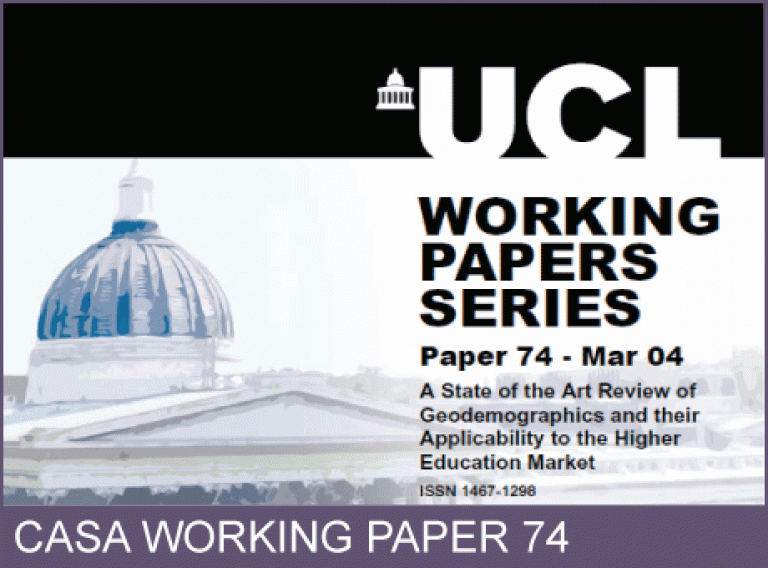CASA Working Paper 74

1 March 2004
A State of the Art Review of Geodemographics and their Applicability to the Higher Education Market
Paralleling a shift from Fordist to Post Fordist methods of production, the importance of knowing who, and more importantly where your customers are has arisen as an integral part of the micro marketing machine. Goss (1995:132) discusses that this is 'essential for companies to be able to plan both tactically and strategically with regards to customers' needs and competitive threats', and it is these core functions of the geodemographic information system that are of growing importance to the public sector. The Higher Education market in the UK is populated by a diverse range of institutions; distinctive by history, culture, courses offered and reputation. More students now attend these institutions than at any point in history, however there has been great debate over the extent to which this access is as available to students from 'disadvantaged' backgrounds.
This market consists of undifferentiated fee price across both course and institutions, currently set £1,125. Many institutions now face financial crisis because funding has not kept pace with increasing student numbers, and in process to address this deficit it has been proposed by the government to introduction of a variable student top up fee. If the Education Bill that contains this top up fee adjustment is passed through parliament it will shift the higher education sector towards a more conventional market model. Up to a capped level, and on the basis of their own pricing policies rather than government regulated values, higher education institutions would determine the level of fees charged to attend particular courses. Students would therefore have added to their selection criteria the cost of a particular course at an institution, and conversely the institution would have a strike price to attract targeted levels of students with given levels of attainments and probably also consistent with intended institutional profiles. Both types of current and future market models create underlying geodemographic structure that differentiates between courses and institutions. This paper sets to create a framework to investigate the applicability of geodemographic data tools and techniques (Geodemographics) within this rapidly developing higher education market, with particular emphasis on these issues of widening participation within a financially viable structure.
This working paper is available as a PDF. The file size is 277KB.
Authors: Alex Singleton
Publication Date: 1/3/2004
 Close
Close

